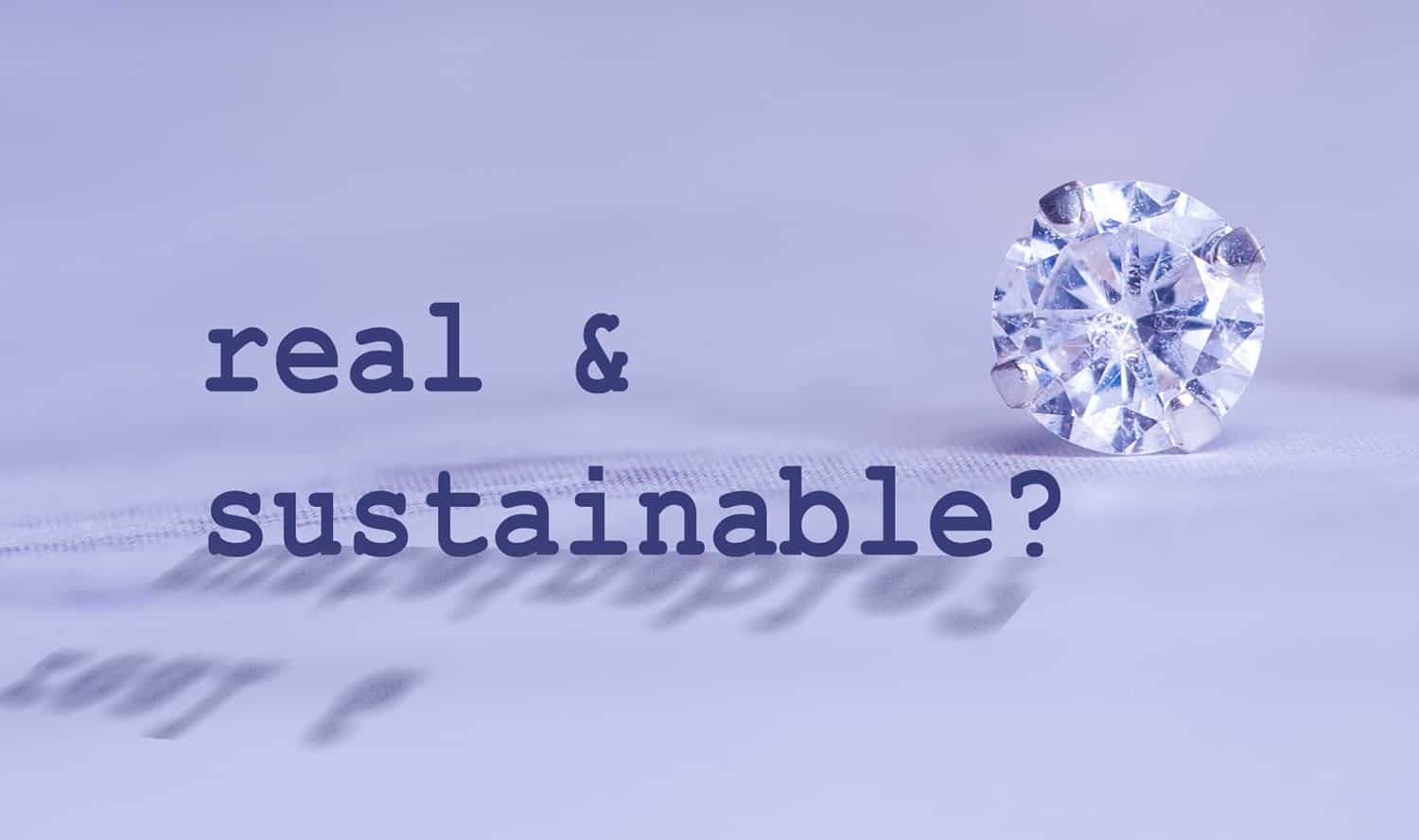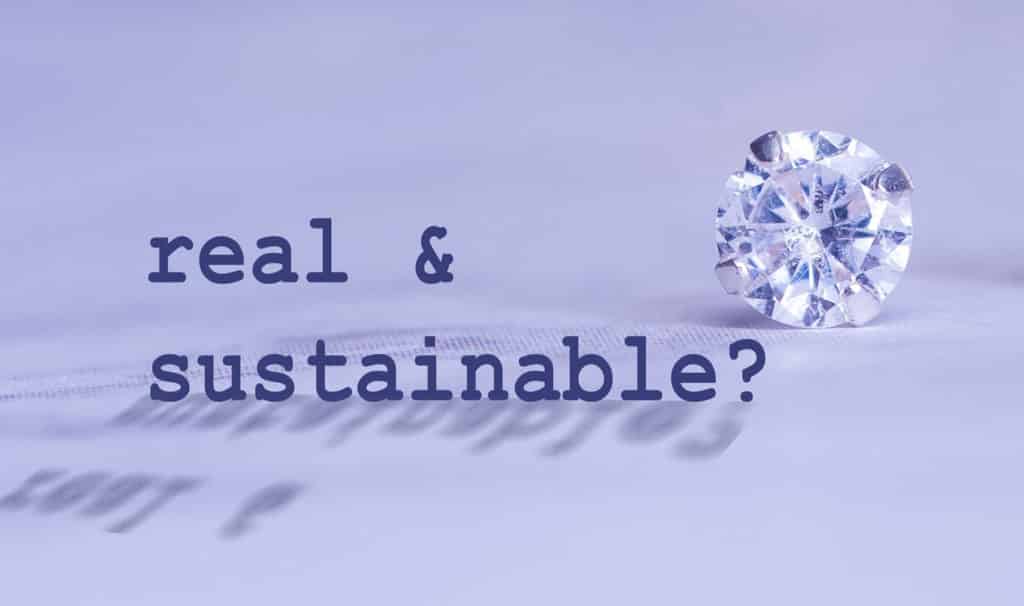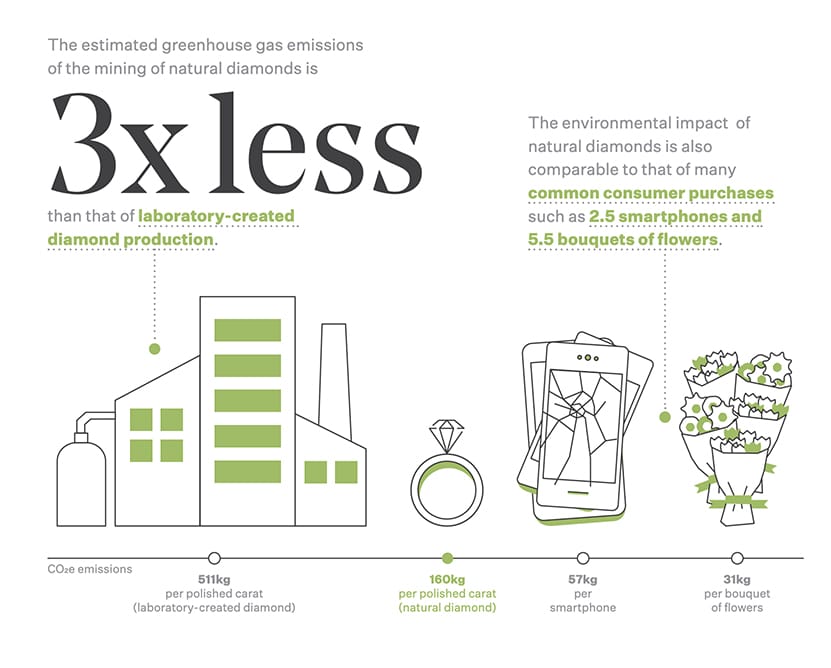Blog
Home » Diamonds blog » Watchdog Hits Natural Producers After Lab-Grown Ruling
Focus on


More specifically, NAD recommended that the Natural Diamond Council discontinue certain advertising claims, and more specifically those dealing with the carbon emissions associated with diamond mining compared with diamond manufacturing, the scarcity of mined diamonds, the resale value of mined diamonds versus man-made diamonds, as well as claims that described mined diamonds as “real”, in contrast to man-made diamonds.
Unsurprisingly, it was the Diamond Foundry that had challenged claims appearing on the Natural Diamond Council’s website and in marketing assets that the body makes available to retailers.
With a budget of many tens of millions of dollars, the Natural Diamond is a body created by the world’s seven largest rough diamond producer’s, specifically to manage the generic marketing of natural diamonds worldwide.
DISCOUNTING CLAIMS ABOUT CARBON EMISSIONS
In its petition to NAD, the Diamond Foundry challenged claims made by the Natural Diamond Council that carbon emissions associated with lab-grown stones are three times greater than those associated with mined diamonds.
In its ruling, NAD determined that the advertiser’s evidence was not sufficiently reliable to support its comparative carbon emissions claims. Furthermore, NAD expressed concern that such claims conveyed a broader implied message about the overall environmental benefits of mined diamonds versus man-made diamonds, which it said is a message that was not supported.
Therefore, NAD recommended that the advertiser discontinue the implied claim that mined diamonds are better for the environment than man-made diamonds. These included statements that third-party research reveals that natural diamonds produce three times less carbon emissions per carat than lab-grown diamonds, equal only to the carbon emissions required to produce three iPhones, and modern diamond miners produce 160 kilograms of carbon emissions per carat of polished diamond, man-made diamonds produce 511 kilograms of carbon emissions per carat of polished diamond.

The NAD determined that the advertiser’s evidence was not sufficiently reliable to support its comparative carbon emissions claims, as seen in this illustration produced by the natural Diamond Council’s forerunner, the Diamond Producers Association.
NAD also determined that claims in the Natural Diamond Council’s online advertising, which emphasize the increasing scarcity of natural diamonds create a sense of urgency about the supply of natural diamonds, is not supported by the evidence.
NAD noted that, while it may be likely that supply issues will someday influence the consumer market for natural diamonds, the challenged advertising reasonably conveys a message that consumers might become “priced out” of the diamond market and unable to purchase natural diamonds in the future, and that they must therefore act now.
NAD noted that nothing in its decision precludes the advertiser from making truthful and non-misleading claims about the global supply of natural diamonds, including their relative availability.
RESALE CLAIMS AND USE OF ‘REAL’ DISPUTED
The Diamond Foundry had also challenged the advertiser’s claims relating to the resale value of mined diamonds versus the resale value of lab-grown stones.
In its recommendations, NAD noted that, while it is not misleading for the Natural Diamond Council to generally refer to mined diamonds as deriving value because they are “rare” or “unique,” the advertiser’s references to “resale” value reasonably convey an unsupported message about the resale value of man-made diamonds.
NAD determined that the Natural Diamond Council may claim that “Natural diamonds obtain their value from their uniqueness and rarity as billion-year-old precious gems older than life itself,” provided such claim is not connected to a message about resale value of man-made diamonds.
However, NAD recommended that the advertiser discontinue implied claims that mined diamonds are more financially valuable than man-made diamonds because they are rare and old.
Finally, NAD determined that, in the context in which it appeared, the advertiser’s use of the word “real” to describe its diamonds reasonably conveys the unsupported message that LGDs, like Diamond Foundry’s, have different physical and chemical properties than mined diamonds. Therefore, NAD recommended that the Natural Diamond Council discontinue the implied claim that man-made diamonds are not “real” diamonds.
In a statement released after the NAD, the Natural Diamond Council stated that it agrees to comply with the advertising watchdog’s recommendations. Furthermore, the council stated that it is “grateful for the NAD’s constructive feedback about its substantiation and will incorporate NAD’s suggestions as it collects additional data to support its advertising claims.”
